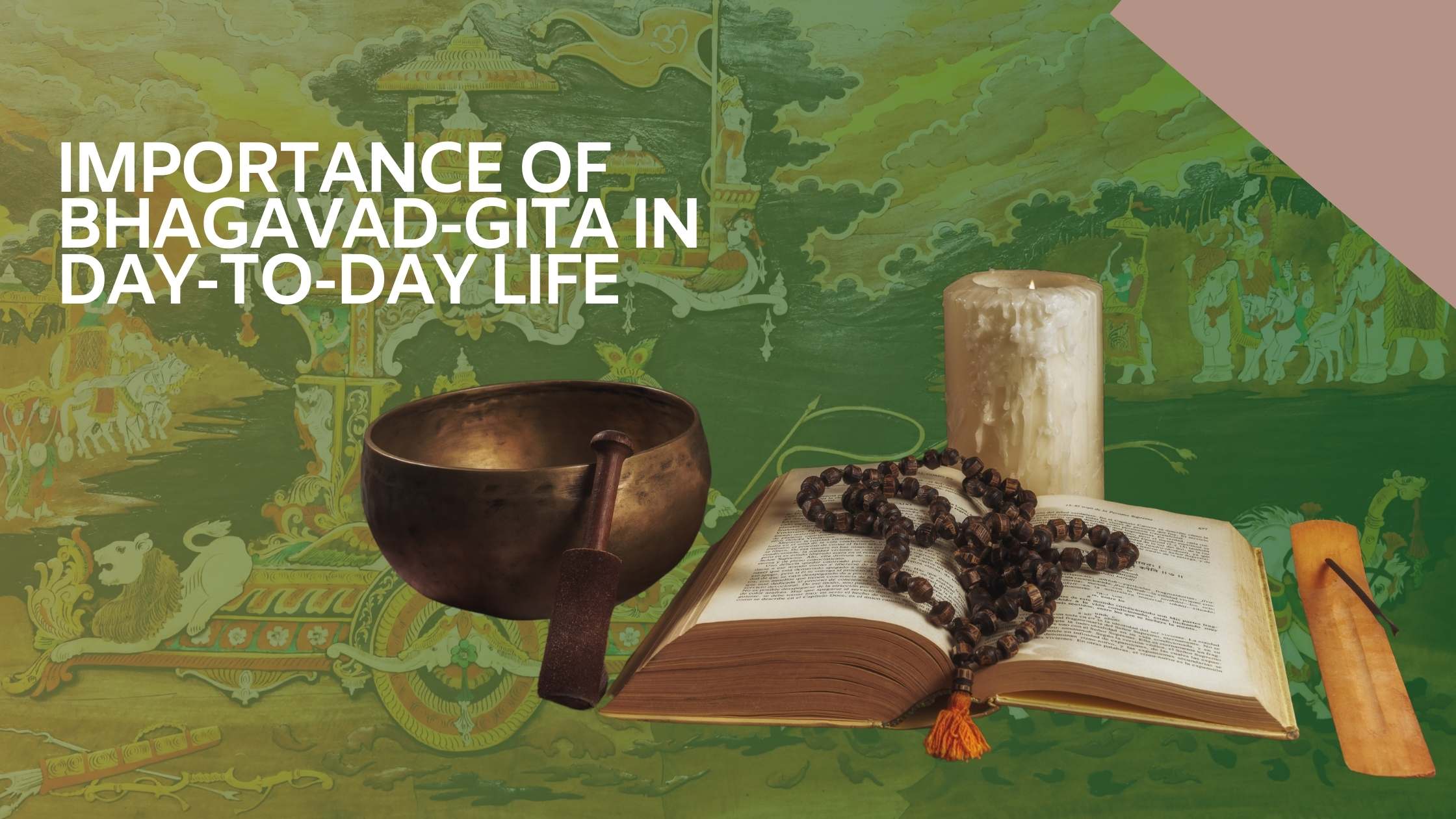The Bhagavad Gita, often called the “manual for life,” is a sacred text offering deep wisdom for overcoming life’s challenges, making it profoundly relevant even in our fast-paced, modern world. Written over 2,000 years ago, its teachings guide us on how to live with purpose, clarity, and inner peace.
At its core, the Bhagavad Gita addresses the human condition, exploring the meaning of life, duty (Dharma), the nature of the self, and the path to liberation. In its dialogue between Lord Krishna and the warrior Arjuna on the battlefield of Kurukshetra, the Gita reveals spiritual insights and practical advice for dealing with inner conflict, fear, and uncertainty—issues that are universal and timeless.
Life’s Purpose and Dharma
One of the central teachings of the **Bhagavad Gita** is the concept of **Dharma** or sacred duty. Each of us has unique responsibilities in life, which we must fulfill to maintain the cosmic order. Krishna advises Arjuna, who is hesitant about fighting in a war, to embrace his duty as a warrior without attachment to the outcome. This message speaks to us today: whether our duty is to our family, career, or society, we are urged to act selflessly and with integrity. As Krishna says, “Your own duty, done imperfectly, is better than another’s done well.” This message helps us stop questioning “Why me?” and instead see our duties as opportunities for spiritual growth.
Detachment and Equanimity
One of the most famous teachings of the Gita, found in **Chapter 2, Verse 47**, is the principle of **detachment from the fruits of our actions**. Krishna tells Arjuna that we have control only over our actions, not their results. This philosophy of “karma yoga” encourages us to focus on our work with dedication and leave the outcomes to a higher power. This is a radical shift from modern society’s emphasis on results, achievements, and recognition. By practicing detachment, we cultivate peace of mind, accepting whatever comes our way as divine grace. Success and failure, Krishna teaches, are mere symptoms of our inner state of awareness and should not dictate our happiness. This lesson is immensely valuable in today’s competitive world, where the pressure to succeed often leads to anxiety and dissatisfaction.
Understanding the Self
A profound theme in the Bhagavad Gita is the distinction between the Self (Atman) and the body. Krishna explains that the true Self is eternal and beyond birth or death, while the physical body and mind are temporary vessels. In Chapter 2, Verse 19, Krishna says: “He who thinks this Self can slay or be slain does not understand.” This teaching helps us transcend fear, particularly the fear of death, by recognizing that the soul is immortal. This understanding can transform how we live, encouraging us to focus on inner growth rather than external achievements.
The Gita’s insights into the nature of the Self also provide a pathway to inner liberation. Through practices such as meditation and yoga, we can separate ourselves from the “movie screen of illusion”—the false identification with the ego and body—and reconnect with our true spiritual nature. As Krishna explains, this realization brings lasting peace and freedom from the cycles of birth and death.
Discipline and Action
Another crucial lesson of the Bhagavad Gita is the importance of disciplined action. Krishna instructs Arjuna to engage fully in his duty without becoming paralyzed by fear or doubt. Discipline, or yoga, is the path to self-mastery, allowing us to face challenges with courage and resolve. This teaching is not just about spiritual discipline but extends to all areas of life—be it work, relationships, or personal growth. When we are disciplined, we can overcome inertia and continue progressing on our path, no matter how difficult it may seem.
In the Gita, yoga is more than just a spiritual practice; it is a disciplined way of living. Whether we are experiencing joy or hardship, discipline keeps us grounded, helping us to stay focused on our purpose and not get lost in distractions or setbacks. This lesson is especially valuable today, as many of us struggle with finding balance amid the demands of daily life. Krishna reminds us that we must continue to act and evolve, regardless of the external circumstances.
Finding Peace Amid Chaos
The Bhagavad Gita offers timeless wisdom for maintaining inner peace amid life’s inevitable turbulence. Krishna teaches that life’s challenges—whether in the form of success or failure—are opportunities for spiritual growth. He emphasizes the importance of **equanimity**—remaining balanced and composed in both victory and defeat. This mindset allows us to rise above the ups and downs of life, maintaining a steady mind and heart, even in the face of adversity.
Krishna’s advice to Arjuna is a reminder that peace is not found in external circumstances but within ourselves. By cultivating detachment, discipline, and a deep connection to the Self, we can navigate the chaos of the modern world with grace and wisdom.
Conclusion: The Gita as a Guide for Modern Life
The **Bhagavad Gita** is not just an ancient scripture but a living guide that offers profound insights for modern life. Its teachings remind us that the answers to our deepest questions and struggles lie within, and by aligning ourselves with the principles of Dharma, discipline, and detachment, we can lead more peaceful, meaningful, and fulfilling lives.
In a world that often feels overwhelming, the Bhagavad Gita provides a roadmap for navigating life with clarity, purpose, and equanimity. Its wisdom helps us rise above life’s challenges, reminding us that our true essence is eternal and that our purpose in life is to act with love, wisdom, and integrity, without attachment to outcomes. Through the Gita, we are empowered to live with courage and compassion, transforming not only our lives but the world around us.


